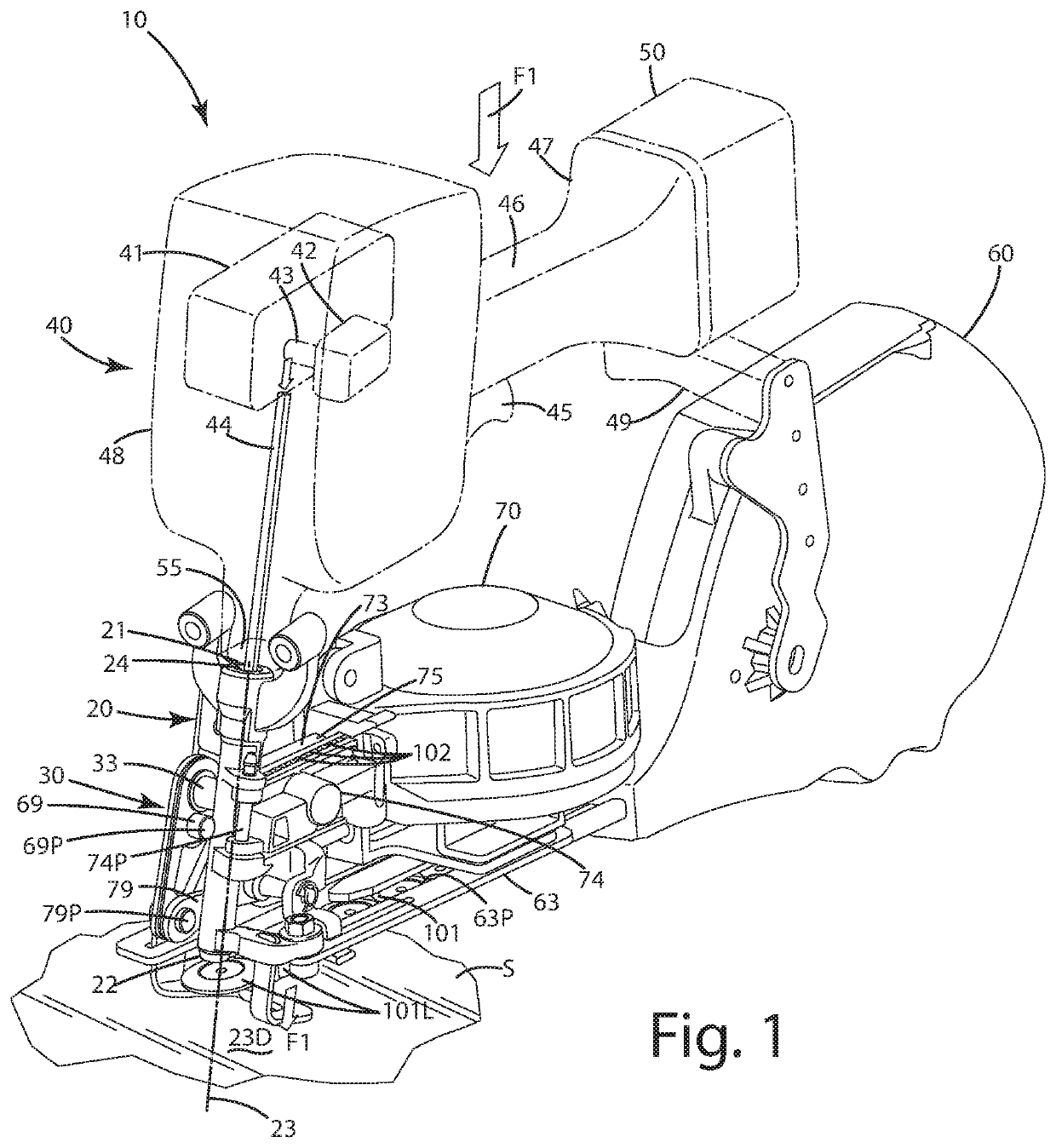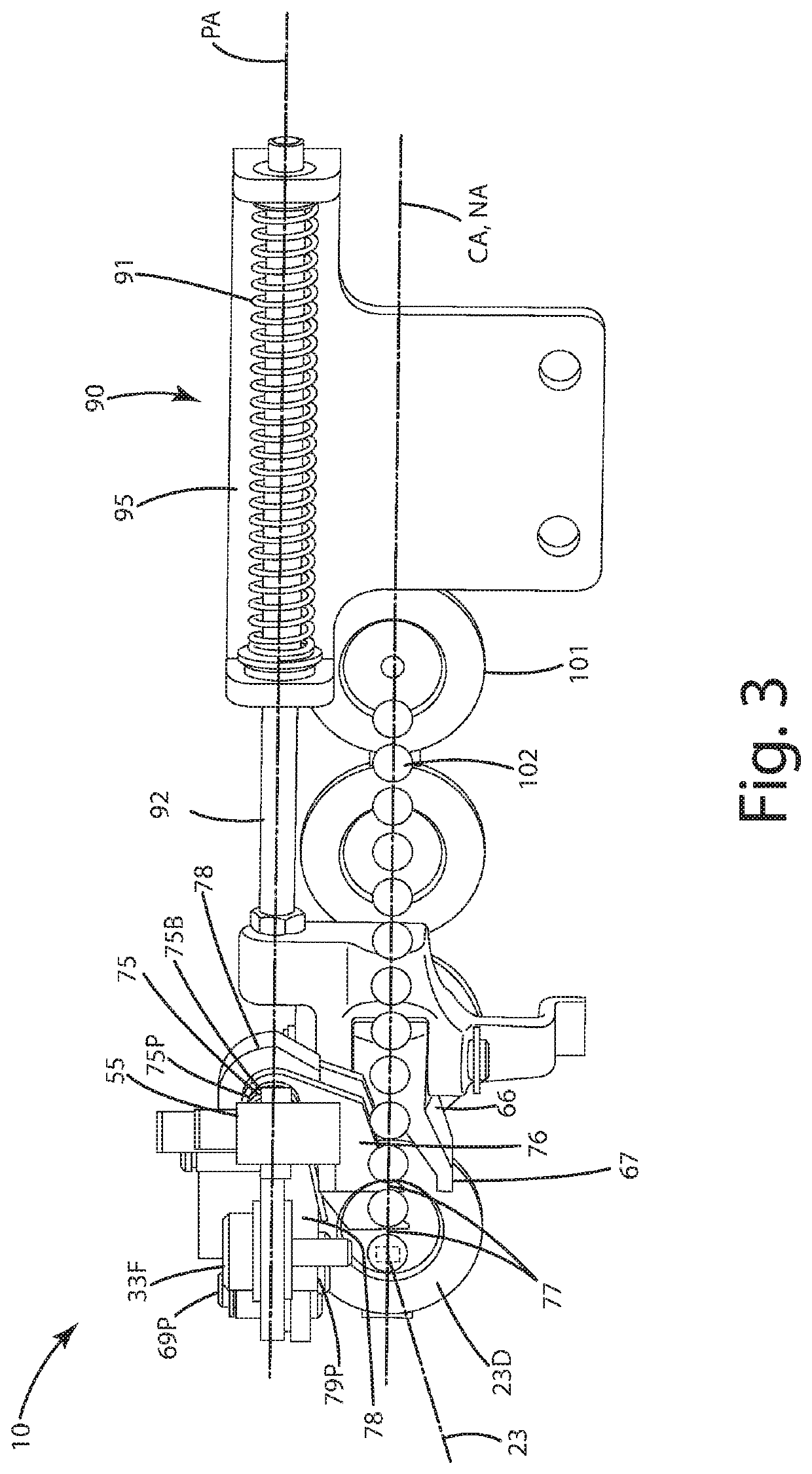Hybrid cordless cap tool
a cordless cap and tool technology, applied in the field of construction tools, can solve the problems of increasing the weight of the tool, reducing the efficiency of the construction process, so as to achieve efficient harnessing and conserved energy
- Summary
- Abstract
- Description
- Claims
- Application Information
AI Technical Summary
Benefits of technology
Problems solved by technology
Method used
Image
Examples
Embodiment Construction
[0028]A current embodiment of a tool of a current embodiment is shown in FIGS. 1-9 and generally designated 10. The tool 10 can be utilized to feed fasteners 101 and caps 102 sequentially toward a nose assembly 20 of the tool, in particular, into the line of a fastener driving path 23 that intersects a fastener driving station 23D. The movement of the fasteners and the caps is provided via the bell crank 30 of the tool 10 that uses mechanical energy input by movement of the tool 10 and stored in a biasing element. The bell crank uses that mechanical energy to move elements that engage the fasteners and the caps respectively and move them toward a discharge station 23, and more particularly, into the fastener driving path 23. When a particular fastener and a cap, for example, a leading fastener 102L and a leading cap 101L are disposed in the fastener driving path 23, the driving unit 40 of the tool 10 can be powered via a power source 50 that is joined with the tool. The power source...
PUM
 Login to View More
Login to View More Abstract
Description
Claims
Application Information
 Login to View More
Login to View More - R&D
- Intellectual Property
- Life Sciences
- Materials
- Tech Scout
- Unparalleled Data Quality
- Higher Quality Content
- 60% Fewer Hallucinations
Browse by: Latest US Patents, China's latest patents, Technical Efficacy Thesaurus, Application Domain, Technology Topic, Popular Technical Reports.
© 2025 PatSnap. All rights reserved.Legal|Privacy policy|Modern Slavery Act Transparency Statement|Sitemap|About US| Contact US: help@patsnap.com



